Anderson Tower
Anderson Tower is named in honor of the College of Engineering's first dean, F. Paul Anderson. It opened in 1967 and houses the departments of Chemical and Materials Engineering, Electrical and Computer Engineering and Computer Science. Engineering Computing Services and the Robert E. Shaver Engineering Library are also located in the tower. It connects to the Raymond Building and the Robotics Building. Anderson Tower contains classrooms, faculty offices and teaching and research laboratories. UK's computer science department was founded in 1966. It was among the first departments of its kind in the nation, and has been recognized for excellence in research and education.


Agricultural Sciences Center North
Located near the intersection of Cooper Drive and South Limestone, Agricultural Science Center North houses offices of the College of Agriculture. The heart of the College of Agriculture, Ag North is home to professors, student services and the dean. The majority of agriculture classes at UK are held in the Ag North building.


Alumni Gymnasium
Alumni Gymnasium is on the corner of South Limestone and Avenue of Champions (Euclid Avenue) next to the Student Center. It includes recreation facilities and offices. Important student services such as Student Support Services and the Disability Resources Center are located in Alumni Gym. Alumni Gym opened in 1924 in what had been the site of a lake and swamp on the edge of campus. It was the home of UK's basketball team until the construction of nearby Memorial Coliseum in 1950. With seating for 3,500 when it opened, Alumni Gym could accommodate the entire student body with 1,500 seats left over. Today, approximately 3,500 are in the freshman class alone.
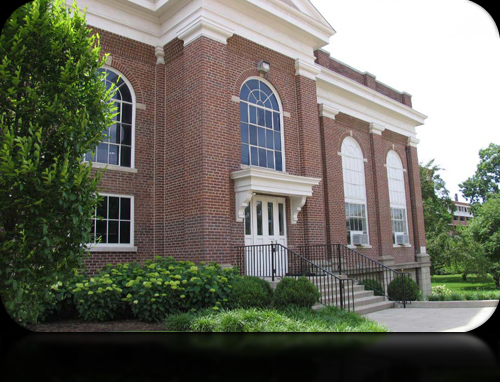

Arboretum
The Arboretum is one of the most spectacular gardens in the nation, boasting year-round color and plants. Young and older alike enjoy year-round activities for the entire family. Many campus and city events are held at The Arboretum including Little Kentucky Derby. The Arboretum was created in 1991 as a joint effort between the University of Kentucky and the Lexington-Fayette Urban County Government.
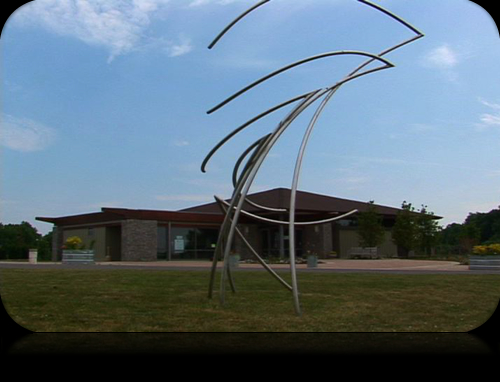

ASTeCC Building
The Advanced Science and Technology Commercialization Center, better known as ASTeCC, is the University of Kentucky's showplace for multidisciplinary research, technology transfer and new business startups. ASTeCC is a combination faculty research facility and commercialization center. The ASTeCC building, located in the heart of the UK campus, features two types of lab space -- faculty labs and labs for business startups that have a connection to UK faculty or staff, or that have licensed UK intellectual property. Faculty with labs in ASTeCC represent colleges throughout the university, and faculty all across campus use ASTeCC as a hub for tech-transfer activities. The $17 million, 80,000-square-foot ASTeCC building opened its doors in 1994. The project was funded by the U.S. Economic Development Administration and the Small Business Administration.
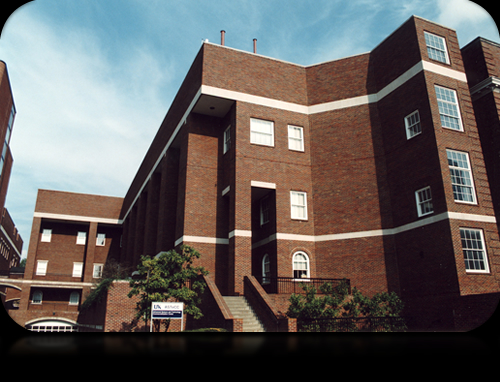

Barker Hall and Buell Armory
Barker Hall, located in central campus at the corner of Administration Drive and Patterson Drive, is the home of the Army ROTC and Air Force ROTC as well as various classrooms, dance studios and an indoor rifle range for the rifle team. The building was completed in 1901 and was originally known as Alumni Hall. In 1931 it was named to honor Henry Barker, president of the University from 1910 until 1917. The adjoining Buell Armory was named for General Don Carlos Buell, a member of the first Agriculatural and Mechanical College board of trustees. The building was expanded in 1937.


Charles E. Barnhart Building
The Charles E. Barnhart Building, formerly known as the Agricultural Engineering Building, houses offices of the College of Agriculture, and is located near the corner of Cooper Drive and South Limestone. Agricultural departments that call the Barnhart Building home include Agricultural Engineering, International Programs in Agriculture, Agricultural Economics and Community and Economic Development among others. Barnhart is a former dean of the College of Agriculture.
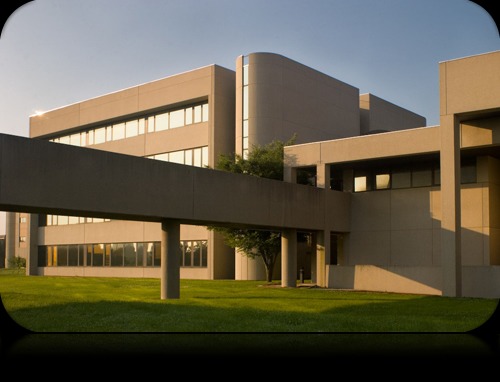

Bernard M. Johnson Student Recreation Center
The Johnson Center is a $15.3 million addition to UK's recreational facility. It houses hundreds of pieces of cardio, weight training, and aerobics equipment, a rock climbing wall, an indoor walking/running track and a cardio theater. Students also are able to sign up to work with a personal trainer and receive health assessments.


Biomedical/Biological Sciences Research (BBSRB)
Biomedical/Biological Sciences Research Building is home to laboratories for the College of Medicine, College of Pharmacy and College of Arts and Sciences.


Breckinridge, Bowman, Bradley, Kinkead Halls
Breckinridge, Bowman, Bradley, and Kinkead Halls, better known as the "quad," were all residence halls in the 1930s. Each building now houses various campus resources. Bradley Hall is home to the Study Abroad and International Affairs offices. Bowman Hall houses the Center for Research on Violence Against Women and the Appalachian and Minority Science, Technology, Engineering and Mathematics Majors program. The African American Studies and Researach Program, Gender and Women's Studies and the Survey Research Center are located in Breckinridge Hall. Kinkead Hall is home to various research-related offices. According to a campus legend, walking through the quad during finals week will result in one failing all their finals!


Carol Martin Gatton College of Business and Economics (B&E)
The College of Commerce was established at the University of Kentucky in 1925 and was renamed the Carol Martin Gatton College of Business and Economics in 1996. Gatton, a UK alumnus, invested $14 million in the college to continue providing the highest quality education for B&E students. The Gatton College is a member of the Association to Advance Collegiate Schools of Business and is ranked one of the nation's leading business schools.


Chemistry-Physics Building
The Chemistry-Physics Building was completed in 1962 and is a notable landmark on campus with its six smoke stacks. It houses the departments of Chemistry and Physics and Astronomy along with labs, classrooms, and offices. The Chem-Phys building also holds its own library and tutoring center.


Commonwealth Stadium
Commonwealth Stadium, located in south campus on University Drive between Cooper Drive and Alumni Drive, was completed in 1973 and expanded in 1999. Home to the Wildcat Football Team, Commonwealth Stadium has been host to the longest game in NCAA football history and record-breaking Cat wins. The stadium and adjoining parking are situated on an 86-acre plot of land that was once used as experimental farm grounds. When filled to capacity on game days, Commonwealth Stadium is the third largest city in Kentucky.
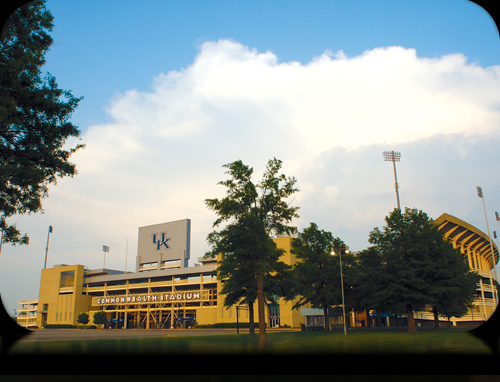

Cooper Building
The Thomas Poe Cooper Building is at the corner of Rose Street and Huguelet Avenue. It houses offices of the Department of Forestry. It was completed in 1930 as the Dairy Products Building and was later named for Thomas Poe Cooper, dean of the College of Agriculture, director of the Experiment Station, and acting president of the university in 1940 and 1941.


Electrical Engineering Annex
The Electrical Engineering Annex, formerly the Mining Engineering Laboratory, contains research laboratories and offices for electrical engineering, computer engineering and computer science faculty members. The building was erected in 1907.


Erikson Hall
Erikson Hall was built in 1939 and was named for Statie Estelle Erikson, a pioneer in the home economics field and director of the School of Home Economics from 1928 to 1956. It is home to the College of Agriculture's School of Human Environmental Sciences. In addition to classrooms and offices, the building houses an early childhood lab operated by the students and faculty of the Department of Family Studies; the Lemon Tree, a reservation-only restaurant run by students majoring in hospitality management and dietetics; the Lemon Twist deli; and a student computer lab. Erikson Hall also has food science labs and a textiles quality control laboratory which serve businesses and industries throughout the country.


Fine Arts Building
The Fine Arts Building is located on Rose Street and is home to the College of Fine Arts and its four departments of Art, Music, Theatre, and Arts Administration. It includes the Tuska Gallery of Contemporary Art and the Guignol Theatre as well as a number of classrooms, art studios, small theaters, and faculty offices. Several productions are held here each year, ranging from student-directed projects to full theater productions.


Frazee Hall
Frazee Hall is located on Administration Drive next to the Student Center. It houses several offices including those of the Vice President Of Student Affairs and the Associate Provost for Faculty Affairs, the Counseling and Testing Center, and the Violence Intervention and Prevention Center. Originally the home of the College of Education, it was completed in 1907 and known as the Education Building. In 1931 it was named Frazee Hall to honor D.F. Frazee, a former member of the UK Board of Trustees.


Funkhouser Building
The Funkhouser Building was built in 1942; it was named to honor William Funkhouser, chairman of the zoology department and dean of the Graduate School. Funkhouser is known as the "one-stop shop" for student services. It houses the Office of the Associate Provost for Undergraduate Education, the Office of Student Financial Aid, the Office of Undergraduate Admissions and University Registrar, UK Campus Housing, Student Billing Services, and the Office of Academic Scholarships. It also has classrooms, biology labs, and interior design studios. Funkhouser is home to the College of Agriculture's departments of Family Studies and Dietetics and Human Nutrition as well as the College of Design's School of Interior Design.


Garrigus Building
The W.P. Garrigus Building, or the Agricultural Science Center South, is home to several offices that are part of the College of Agriculture. Garrigus is named for Wesley Patterson Garrigus, former associate director of the Experiment Station, chairman of the Department of Animal Sciences and Man of the Year in Kentucky Agriculture in 1953 and 1964. The Departments of Community Leadership and Development, Animal and Food Sciences and Equine Science and Management are housed in Garrigus. There is also a working meats lab in the basement.


Gillis Building
The Gillis Building was completed in 1892 as the Experiment Station, and now houses The Graduate School. Gillis' many tenants over the years have included the natural history, chemistry, law, hygiene, and public health departments; an infirmary; and the registrar's office. In 1978 it was named to honor Ezra Gillis, the first university registrar, who served from 1910 until his retirement in 1937. The Gillis Building also temporarily housed the President's Office after fire severely damaged the Main (formerly Administration) Building in 2001.


Gluck Equine Research Center
The Maxwell H. Gluck Equine Research Center, named for the building's benefactor and former owner of Elmendorf Farm, is located in the southern part of campus on Nicholasville Road. Part of the College of Agriculture, the Gluck Center was dedicated in 1987 and houses offices of the Department of Veterinary Science. It is the largest equine research facility in the world and four out of five of the major equine vaccinations were developed in this facility.


Grehan Building
The Grehan Building was completed in 1951 and named to honor Enoch Grehan, journalism faculty member. The Grehan Journalism Building is home to the College of Communications and Information Studies and all of its divisions: the School of Journalism and Telecommunications, the Department of Communication and the School of Library and Information Science. Future journalists can get their start working at the Kentucky Kernel, the student newspaper, or for the Kentuckian, UK's yearbook.


Hilary J. Boone Center
Newly renovated and expanded, the Hilary J. Boone Center offers some of the finest meeting and dining facilities in Lexington. Located in the heart of campus, the center has more than 20,000 square feet of meeting and dining space. The new, upscale main dining room can accommodate 300 people for the most formal of events. Expanded and renovated meeting rooms, complete with wireless connections and new furnishings, can easily hold up to 80 people. And a new library, bar area and side patio offer casual dining and meeting opportunities as well.


James F. Hardymon Building
The Hardymon Building houses the Alliance for Networking Excellence, dedicated to excellence in computer networking education, research and innovation; the Laboratory for Advanced Networking, a primary research facility; and office space for UK's Information Technology unit. James F. Hardymon, an alumnus of the UK College of Engineering, is a former chairman and chief executive officer of Textron Corporation and currently serves on the University of Kentucky Board of Trustees.


Joe Craft Center
The Joe Craft Center, the $30 million state-of-the-art basketball practice facility, opened in January 2007. The facility houses the men's and women's basketball teams plus many administrative and UK athletics staff offices. Located behind Memorial Coliseum, the Craft Center is one of the premier athletic facilities in the nation.
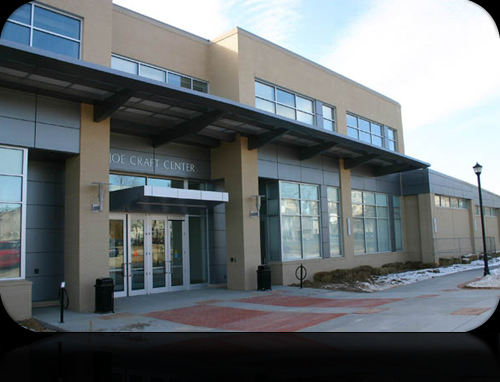

Kastle Hall
Kastle Hall was built in sections, the first in 1909, and was completed in 1926. It originally housed the Department of Chemistry and was known as the New Chemistry Building. It was named to honor Joseph Kastle, a professor of chemistry. Kastle Hall is now home to the Department of Psychology, one of UK's largest undergraduate majors. It has a nationally recognized research reputation in many areas including prejudice reduction, prevention of substance abuse, eye witness testimony, animal cognition, and social emotions.


King Alumni House
The King Alumni House is home to the University of Kentucky Alumni Association, which provides an on going connection between the alumni and the university community while developing positive goodwill, support and loyalty to UK. The King Alumni House has hosted receptions, dinners and meetings for alumni and friends of UK. There are also two spacious suites located on the second floor that contain separate bedroom and living quarters available for alumni use.


Kirwan/Blanding, Smith, Baldwin, Ingels Complex
Nearly 6,000 students live in UK residence halls, all of which have Internet access, cable TV, laundry accessibility and meal plans - with unlimited choices and Plus Account options. Some halls offer nine-month living arrangements for students unable to leave campus between semesters. Some residence halls are specialized Living-Learning Communities, where students share a common academic interest, such as: Honors, Wellness, German, Arts, Civic Engagement, Global Village, and New Economy.


Lafferty Hall
Lafferty Hall was completed in 1936 as the College of Law. It is named for William T. Lafferty, first dean of the College of Law. It is now home to the Department of Anthropology and the Webb Museum of Anthropology.


Lancaster Aquatic Center and Seaton Center
The Harry C. Lancaster Aquatic Center and Seaton Center are located in south campus on Complex Drive. The Lancaster Aquatic Center includes a 50 meter pool and other campus recreation facilities and is home to the UK Swimming and Diving Team. The Seaton Center is home to the Department of Kinesiology and Health Promotion, the Health and Wellness Program, the UK Cheerleading Squad and some campus recreation facilities and related offices.


Law Building
Founded in 1908, the University of Kentucky College of Law was one of the nation's first state law schools. The nationally ranked college has been approved by the American Bar Association since 1925 and was elected to the Order of the Coif, the most prestigious national legal honorary society, in 1931. The College of Law building houses classrooms, offices, a 100,000-volume library and a 250-seat courtroom, which is occasionally used by the Kentucky State Supreme court for hearings.


Lucille C. Little Fine Arts Library
The Lucille Caudill Little Fine Arts Library and Learning Center is located in the central campus between Library Drive and Patterson Drive behind the Fine Arts Building. It was built in 1974 as an addition to the original King Library and was known as King Library North. A bridge connecting the North and South buildings was removed in 1999 and the Little Library was extensively renovated and reopened in 2000. In the basement of the library there is a state-of-the-art computer lab consisting of 21-seat classrooms and a 32-seat general use area. It currently contains dual 2GHz Power Macintosh G5 towers and a wide variety of software and peripherals targeted for multimedia projects.
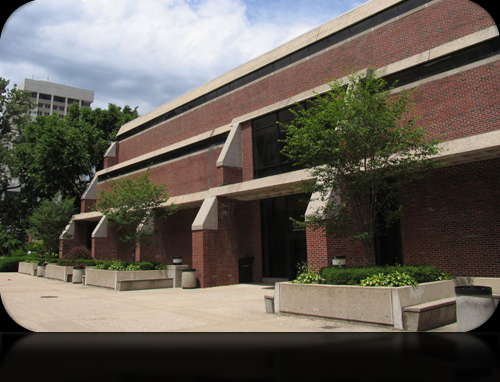

Margaret I. King Building
The Margaret I. King Building is located in central campus between Library Drive and Patterson Drive just behind Maxwell Place and is named for UKÕs first librarian. The north side of the building is the home of Special Collections and Digital Programs which includes the Special Collections Library, Archives, Preservation and Digital Programs, the nationally recognized Louie B. Nunn Center for Oral History, the Kentucky African-American Encyclopedia Project, and the Wendell H. Ford Public Policy Research Center. The south side of the building is being renovated and will become the Science Library. Until the completion of the William T. Young Library in 1998, the King Library served as the main library on campus.


Main Building (Formerly the Administration Building)
Built in 1882, the Main Building is the oldest building on campus. It originally housed the president's office, classrooms (which doubled as faculty offices), the armory, a chapel and a cafeteria. At that time, State College (UK's earliest name) required every student to perform two hours of community service each week. In May 2001, workers were renovating the building when it caught on fire. The fire left the building severely damaged and it underwent extensive reconstruction. The Main Building, newly rebuilt, now houses the Office of the President and other top-level administrators, the visitor center, classrooms, and meeting rooms.


Maxwell Place
Maxwell Place is the residence of the president of the University of Kentucky. It was built in 1872 for Judge James Hillary Mulligan and named for Maxwell Springs, which were located on the property. It was sold to the university in 1917 by Mulligan's heirs, along with 13 acres, for $40,000. Frank McVey was the first president to live in the house. Currently President Lee T. Todd Jr. and his wife call Maxwell Place home. Todd became UK's 11th president in 2001. He is the sixth alumnus to hold the presidency.


McVey Hall
McVey Hall is named for Frank McVey, who served as UK president from 1917 to 1940. It was completed in 1928. Today it is home to UK's student computing center, where most computer problems are repaired free of charge; WUKY, the nation's oldest university owned radio station; and the Center for Computational Sciences.


Memorial Coliseum
Memorial Coliseum is located on Avenue of Champions. It was completed in 1950 as a war memorial for the 10,000 Kentuckians who died in World War I, World War II and the Korean Conflict. Today it houses the athletics administration and several coaches' offices. The Coliseum serves as the home location for UK's women's basketball and volleyball contests as well as gymnastics meets.


Memorial Hall
Memorial Hall was built in 1929 in honor of Kentuckians who died in World War I. Scrolls inside the building list the war dead by county. The large fresco in the lobby depicts scenes from early Lexington and central Kentucky. It was completed in 1934 by Ann Rice O'Hanlon, a University of Kentucky graduate, as part of the Public Works of Art Project. Today, Memorial Hall is used for large classes, common hour exams, guest lectures, performances, Greek events, and graduation ceremonies.


Miller Hall
Miller Hall was built in 1898 and extensively renovated in 1994. It is named for Arthur McQuiston Miller, the first dean of the College of Arts and Sciences and UK's first football coach. Miller Hall is home to central advising services (including pre-professional and undergraduate studies), honors classes, architecture studios, and a cartography lab.


Mining and Mineral Resources Building
The Mining and Mineral Resources Building was dedicated in 1988 and contains mining engineering facilities for research and instruction that are among the most modern in the nation. The building also houses the Kentucky Geological Survey, the Kentucky Water Resources Research Institute and the Department of Earth and Environmental Sciences coal group. Among the research facilities in the building are ventilation tunnels used to gather information about air flow through mines and a mine electricity laboratory.


Thomas Hunt Morgan Biological Sciences Building
The Thomas Hunt Morgan Biological Sciences Building is located on Rose Street at Washington Avenue. It is named for Thomas Hunt Morgan, a Nobel Prize winning scientist who is credited with laying the foundation for genetics today, and houses the Department of Biology, home to the largest undergraduate major on campus. The Department of Biology is host to outstanding research programs in various fields across the spectrum of modern biology. The department offers research opportunities, training, and instruction at all levels, from postdoctoral to graduate to undergraduate.


North Neighborhood - New North Dorm
Living on North campus brings students close to many classrooms, Memorial Coliseum, Rupp Arena, downtown Lexington, Stoll Field, the Singletary Center for the Arts and several eclectic shops on South Limestone. This area features many places to eat including: the Student Center Food Court, Blazer Café, Blazer Xpress (a convenience store), and other independent restaurants on South Limestone and Euclid Avenue. North Campus is comprised of Blazer, Boyd, Holmes, Jewell, Keeneland, Patterson, and New North halls.


Oliver H. Raymond Building
The Oliver H. Raymond Building was completed in 1994 and is home to the civil engineering department. The Raymond Building includes civil engineering classrooms, laboratories and computing facilities. It is also the home of administrative offices and laboratories of the Kentucky Transportation Center, which provides research expertise for improving the state's transportation system.


Patterson Office Tower and Patterson Statue
Patterson Office Tower, also known as POT, was built in 1969. Its 18 stories feature some of the best views of Lexington. It is named after UK's first president, James K. Patterson, and houses offices for College of Arts and Sciences, College of Social Work, Honors Program, the Dean of Students Office, and various student resources including multicultural affairs and fraternity and sorority affairs. POT is also home to Intermezzo café, a popular eatery located on the mezzanine.
James Kennedy Patterson served as UK's first president from 1869 to 1910. Known as the "grand old man," Patterson was the object of frequent student pranks; on one occasion, students kidnapped his horse, painted it with green stripes and put it in the chapel. Despite the pranks, Patterson was dedicated to the university, using his personal savings to help establish the school. He and his brother Walter provided a monetary gift for a statue of Patterson which was eventually sculpted by Augustus Lukeman at a cost of $25,000. It was dedicated in 1934 to coincide with the 100th anniversary of Patterson's birth. The statue has been relocated several times as the campus landscape has changed; he now sits in the plaza outside of the Main Building and POT and greets visitors to campus as they leave the visitor center.


Pence Hall
Pence Hall was completed in 1909 and was named to honor Merry Pence, chairman of the physics department and designer of the building. It originally housed physics and civil engineering departments. Pence Hall now holds the only accredited architecture school in Kentucky, with labs in Louisville and Italy.


Ralph G. Anderson Building
The Ralph G. Anderson Building was completed in 2002 and is home to the Department of Mechanical Engineering. It contains 60,000 square feet of useable space, and includes instructional labs, research facilities, computer labs, a student commons area and administrative offices. The Anderson Building completed the university's initiative to develop a modern engineering complex. The Department of Mechanical Engineering has a long tradition of innovation. In the early part of the 20th century, the faculty was widely known as pioneers in the field of air conditioning. One of those pioneers was Margaret Ingels, a 1916 mechanical engineering graduate from UK who was the second woman in the U.S. to earn an engineering degree, and the first to earn a graduate degree in engineering.


Reynolds Building
The Reynolds Buildings are located at the end of Scott Street on South Broadway. Reynolds Buildings 1 and 2 contain studio space for the Department of Art as well as the metal arts program and the Barnhart Gallery. Reynolds Building 3 houses the UK Supply Center. The three Reynolds Buildings were originally tobacco warehouses.
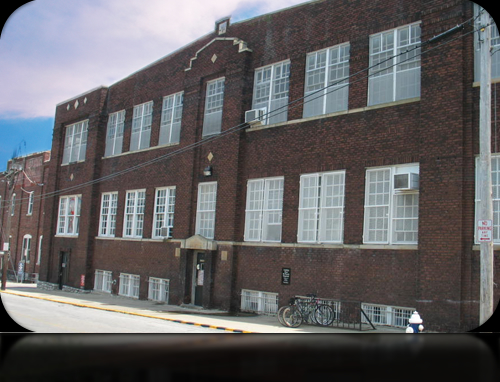

Robotics Building (CRMS Building)
Established in 1986 by the Commonwealth of Kentucky as the Center for Robotics and Manufacturing Systems, the Center for Manufacturing is the premier source of manufacturing technological assistance for Kentucky's industries, providing service to approximately 350 companies, entrepreneurs, and agencies annually. The center conducts manufacturing research, transfers manufacturing technology to industry, and supports educational efforts in manufacturing.


S. J. "Sam" Whalen Building
The Whalen Building houses the Consortium for Fossil Fuel Science, the Kentucky Transportation Center's Environmental Analysis section, and several research laboratories for the Department of Chemical Engineering. The building is named for S. J. "Sam" Whalen, a 1949 UK graduate in metallurgical engineering and a member of the College of Engineering's Hall of Distinction.


Scovell Hall
Scovell Hall is located in central campus at the corner of Washington Avenue and South Limestone. It houses a variety of University offices including Human Resources Services and various offices of the College of Agriculture. It was completed in 1905 as the Experiment Station Building and was expanded in 1913 and 1936. Scovell Hall was named for Melville A. Scovell, first head of the Agricultural Experiment Station (1885) and later dean of the College of Agriculture (1910).


Otis A. Singletary Center for the Arts
The Singletary Center for the Arts opened in 1979; it was named to honor Otis A. Singletary, former president of the University of Kentucky. It includes a 1,500-seat concert hall, a 400-seat recital hall, and the University Art Museum. The Singletary Center hosts about 350 events annually. Most events are free or discounted to students with their UK student ID.


James W. Stuckert Career Center
Dedicated in October 2000, the Stuckert Career Center offers 15 private interview rooms, three meeting rooms and the Kemper Career Library, one of the largest career libraries in the nation. Many resources are available to students and alumni through the career center, including career counseling and coaching, credential services, workshops, a mentoring network and an online internship and job posting portal known as CyberCAT. The building is named for James W. Stuckert, UK alumnus and retired chairman and CEO of Hilliard Lyons, as well as generous benefactor to the university.


Student Center
The Student Center was completed in 1937. It holds the Student Organizations Center, where there is information about over 300 clubs and organizations at UK. It also contains the offices of Student Government and the Student Activities Board; the Martin Luther King Jr. Cultural Center; Rasdall Art Gallery; a food court with a Starbucks, Chic-Fil-A, Subway and other campus eateries; WRFL, the student radio station; Ticketmaster; UK Credit Union; and STA Travel Agency.
The Student Center Annex was added in 1987 and is home to the UK Bookstore, the Worsham Theatre, study areas, meeting rooms and the Cats Den entertainment and recreation area.


William B. Sturgill Development Building
The Sturgill Development Building houses the Office of Development. The Office of Development works to raise funds to increase scholarships, fellowships, endowments, endowed chairs and professorships to enable UK to be competitive with other Top 20 public institutions across the country. The development office works to create partnerships with organizations outside of the university and supports academic programs that enhance learning, creativity and critical thinking, which are vital to the success of students at UK and after they leave to compete in a global economy.


Taylor Education Building and Dickey Hall
The Taylor Education Building was built in the 1920s to house the education departments and the University School, predecessors to the College of Education. It was named to honor William Taylor, dean of the college until his death in 1949. Classrooms and offices of College of Education faculty are located in Taylor Education Building.
Dickey Hall, near the northeast edge of campus on Scott Street, houses offices and classrooms of the College of Education. It was built in 1964 and named for Frank G. Dickey, the fifth president of the University of Kentucky.


The Amphitheatre
The Amphitheatre, located behind Memorial Hall, is a popular gathering place for students to study, eat, or take a quick nap. Small classes, outdoor plays and concerts are held here on nice days.


White Hall Classroom Building
White Hall Classroom Building was completed in 1969 on the site of State College's original residence hall, White Hall, and old Carnegie Library. It now hosts most of UK's general education classes and is called the "Classroom Building" by most students. It houses large lecture halls on the lower floors and smaller classrooms on the upper floors, all with smart classroom capabilities. There are also language listening labs located on the third floor The UK Post Office is in the basement along with Fedex Kinko's Office and Print Services. There is also a tunnel that connects the Classroom Building with POT, a great shortcut on cold, windy days!


W.T. Young Library
Dedicated April 3, 1998, the William T. Young Library is a $58 million dollar facility that was privately funded. It is home to $67 million of UK Libraries' materials endowment. The entire UK Libraries' materials endowment is more than $79 million and the largest of any public university. The library contains over 1.2 million books that if placed end to end would stretch over 300 miles - from Lexington to St. Louis! The shades in the library are activated by sunlight, so that the sun does not damage the collections. The Young Library has a number of resources including 4,000 general seats, 57 group study and conference rooms, 3,600 network ports, two computer labs available to students (650 personal computers are available all through the library), and a laptop loan program. The library also houses Ovid's Café and Starbucks, both popular student eateries and the Hub @ WT's. Located in the basement of William T. Young Library, the Hub provides library research assistance and IT help in one convenient location. The Hub itself features over 200 Windows computers as well as a new Mac lab for student use. Four video editing rooms and two presentation practice rooms are currently under construction. The Hub offers flexible, comfortable furniture for students to arrange to meet their group study needs, including rolling cubicle walls and whiteboards. In addition, Grub at the Hub features new snack and beverage machines in a lounge area.


W.T. Young Library
Dedicated April 3, 1998, the William T. Young Library is a $58 million dollar facility that was privately funded. It is home to $67 million of UK Libraries' materials endowment. The entire UK Libraries' materials endowment is more than $79 million and the largest of any public university. The library contains over 1.2 million books that if placed end to end would stretch over 300 miles - from Lexington to St. Louis! The shades in the library are activated by sunlight, so that the sun does not damage the collections. The Young Library has a number of resources including 4,000 general seats, 57 group study and conference rooms, 3,600 network ports, two computer labs available to students (650 personal computers are available all through the library), and a laptop loan program. The library also houses Ovid's Café and Starbucks, both popular student eateries and the Hub @ WT's. Located in the basement of William T. Young Library, the Hub provides library research assistance and IT help in one convenient location. The Hub itself features over 200 Windows computers as well as a new Mac lab for student use. Four video editing rooms and two presentation practice rooms are currently under construction. The Hub offers flexible, comfortable furniture for students to arrange to meet their group study needs, including rolling cubicle walls and whiteboards. In addition, Grub at the Hub features new snack and beverage machines in a lounge area.



